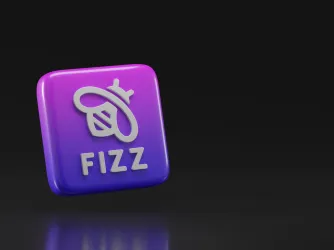Table of Contents
Arizona State Turns to Censorship in Wake of Controversial Party

By now, it seems that virtually everyone in America has heard about the theme party held on Martin Luther King Day by members of the Tau Kappa Epsilon (TKE) fraternity at Arizona State University. The situation almost seems as though it was scientifically engineered to garner outrage and go viral. Students dressed in sports attire made what are being called “gang signs” with their hands, and, in what was probably the apex of bad taste, one female partygoer was pictured drinking out of a cup hollowed out from a watermelon. Also typical of college students these days is the fact that photos were posted on Instagram. Of the three photos that have been made public, the one at the top of this page conveniently sums up all of the reported objectionable features of the party.
The predictable outrage ensued. Anderson Cooper did a segment about it on his show. The Twitterverse exploded. It made USA Today. And a local civil rights group threatened to boycott the university’s athletic program if the students involved were not expelled, asking, “Dr. King gave his life for this nation—what has changed?” (In a statement posted today, the national TKE fraternity suggests that the facts may not all be as reported and condemns the “actions of the few members involved in this incident.”)
In response, Arizona State—a university that earned a “green light” from FIRE in 2011 for eliminating nearly all of its written speech codes and promising to revise its last, “yellow light” code—took the worst possible course of action. It explicitly punished the students in part because of their expression, declaring the party to have violated a policy prohibiting “[e]ngaging in discriminatory activities, including harassment and retaliation, as prohibited by applicable law or university policy.”
It’s important to note here that there has so far been no report that any alleged victims of discrimination were present at the party. Nobody, for instance, has accused the partygoers of prohibiting black students from attending the party or of personally engaging in the physical or verbal abuse of black students. If such evidence exists, Arizona State has not seen fit to mention it. Indeed, its January 23 public statement about the fraternity’s punishment states, “TKE was suspended Jan. 20, 2014 for hosting an unregistered, off-campus event Jan. 19, 2014 that encouraged a racially-insensitive theme and created an environment conducive to underage consumption of alcohol.”
No matter how outrageous the party, the First Amendment prohibits Arizona State from punishing students based on expressive activity simply because it might be offensive to some, most, or even all of us. In fact, there’s a case directly on point: Iota Xi Chapter of Sigma Chi Fraternity v. George Mason University, 993 F.2d 386 (4th Cir. 1993). In that case, a fraternity chapter held an “ugly woman” contest as part of a charity event where fraternity brothers would dress up and do skits dressed as “ugly women.” According to the opinion, one member “dressed as an offensive caricature of a black woman. He was painted black and wore stringy, black hair decorated with curlers, and his outfit was stuffed with pillows to exaggerate a woman’s breasts and buttocks. He spoke in slang to parody African-Americans.” Id. at 388. If anything, this sounds worse than the Arizona State partygoers.
Yet the United States Court of Appeals for the Fourth Circuit found that this depiction was expressive conduct—and protected by the First Amendment. The court based its decision on the Supreme Court’s famous decision in Texas v. Johnson, 491 U.S. 397 (1989), in which the Court determined that the burning of the American flag is protected speech.
Texas v. Johnson strongly stands for the proposition that the offensiveness of given expression cannot be a basis for punishment by the government (of which Arizona State, as a state university, is a part). In a passage that is frequently cited by FIRE, the Court wrote, “If there is a bedrock principle underlying the First Amendment, it is that the government may not prohibit the expression of an idea simply because society finds the idea itself offensive or disagreeable.” Id. at 414. (In case more reassurance was needed on this point, the Court provided no fewer than 13 case citations proving it.) Later, the Court pointed out that “[t]he First Amendment does not guarantee that other concepts virtually sacred to our Nation as a whole—such as the principle that discrimination on the basis of race is odious and destructive—will go unquestioned in the marketplace of ideas.” Id. at 418.
Another issue that figured in the Iota Xi case was the question of whether dressing up like an “ugly woman” actually constituted an expressive act. In considering this question, the Fourth Circuit again turned to Johnson, and its analysis is directly applicable to Arizona State. In fact, with the exception of some name changes, this part of the Iota Xi opinion sounds like it could come from a future case out of Arizona State, should the punished students choose to defend their rights in court:
The affidavit from the University’s Vice-President, Earl Ingram, stated that the message conveyed by the Fraternity’s conduct — that racial and sexual themes should be treated lightly — was completely antithetical to the University’s mission of promoting diversity and providing an educational environment free from racism and sexism. Dean Bumgarner, in his affidavit, stated that the University
does not and cannot condone this type of on-campus behavior which perpetuated derogatory racial and sexual stereotypes, tends to isolate minority students, and creates a hostile and distracting learning environment. Such behavior is incompatible with, and destructive to, the University’s mission of promoting diversity within its student body [and] sends a message to the student body and the community that we ... are not serious about hurtful and offensive behavior on campus.
Importantly, the affidavits establish that the punishment was meted out to the Fraternity because its boorish message had interfered with the described University mission. It is manifest from these circumstances that the University officials thought the Fraternity intended to convey a message.
Iota Xi, 993 F.2d at 392.
For comparison, let’s look at what ASU wrote in its statement about the TKE incident:
When students gather as part of a university recognized organization, whether it is a varsity sports team, the student newspaper, an academic club or a fraternity, students are expected to conduct themselves in a manner that reflects the core values of ASU, which include respect for all people, races and cultures.
ASU has one of the most diverse student bodies of any major university in the country, and it is unfortunate that a few individuals held an offensive party at a time when ASU, the state and the nation were celebrating Dr. King’s achievements and legacy.
It’s pretty clear from this that the university believed the party’s theme was intended to convey a message—otherwise, how could it be offensive?
The other prong of the Johnson test for whether something is an expressive act, by the way, is that there be “a great likelihood that the message would be understood by those who viewed it.” Id. (internal quotations omitted). From the uproar in the media, it’s pretty clear that there’s no shortage of people who received and understood an offensive message about African-Americans in this case.
It would be remiss for FIRE not to point out that Arizona State has not always been so sensitive about racial discrimination. In fact, FIRE has dealt with Arizona State on two previous occasions in which students were actually being denied educational opportunities because of their race. The perpetrator of this discrimination? Arizona State University, which operated racially exclusive history and English classes. And not during the Jim Crow era, either—FIRE last uncovered such classes in the year 2005. The classes were restricted to Native Americans only, and in the case of the English classes, FIRE uncovered evidence that these classes had excluded all other ethnicities from these classes for at least eight years running. While we’re glad to see that Arizona State has now decided to be against discrimination rather than actually practicing it, it’s highly unfortunate that students’ fundamental rights are once again the casualties of Arizona State’s decisions.
Recent Articles
Get the latest free speech news and analysis from FIRE.

FIRE's 2025 impact in court, on campus, and in our culture

The trouble with banning Fizz

VICTORY: Court vindicates professor investigated for parodying university’s ‘land acknowledgment’ on syllabus
